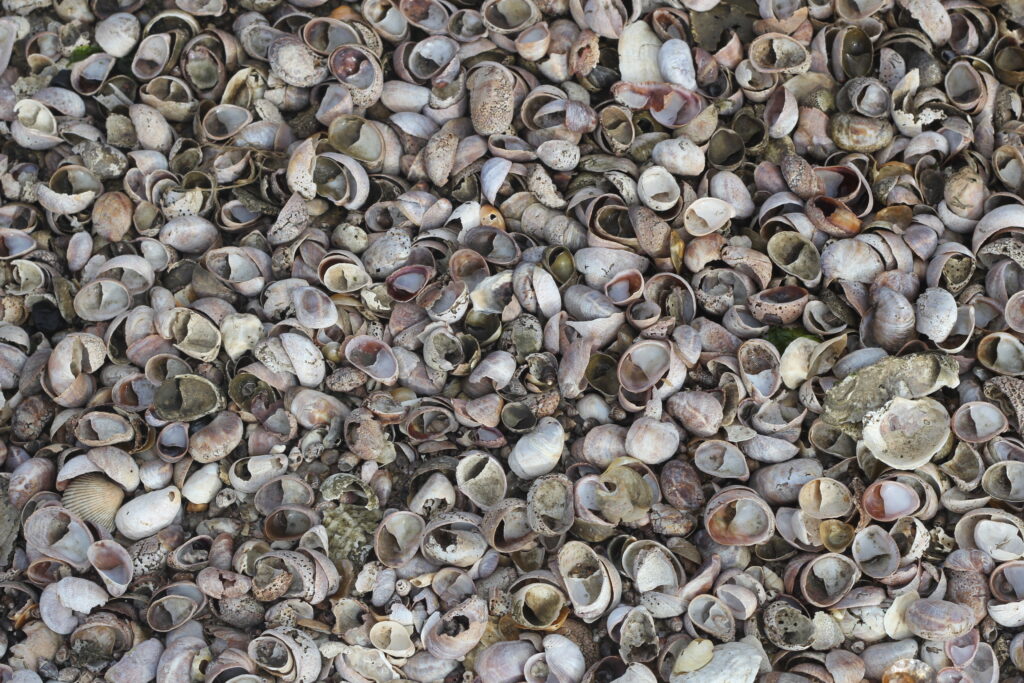World
For local farmers, the oyster is their world

Michelle So, Contributing Photographer
For Thomas Henninger, founder of the Madeleine Point Oyster Farm, oyster farming was his “redemption.” Henninger spent his early life working on a commercial fishing boat, where he felt deeply troubled by the practices he engaged in.
“I fished tens of thousands of fish and shoveled them off the boat — dead,” Henninger said. “I harpooned thousands of 25-year-old apex predators like swordfish or tuna. I wrecked the breeding grounds of cod by dragging huge trowels to damage the bottom where they breed. I was a huge part of the problem.”
After his stint of owning the dive bar Rudy’s in downtown New Haven, Henninger opened his oyster farm. Now every morning, he looks out his bedroom and sees his farm in Maine floating on the Atlantic Ocean. A deep sense of connection to the Earth gives him profound pride and dignity in his work, he said.
Centuries earlier, Norwalk, Connecticut was the 19th-century “oyster capital of the world.”
While the nickname has since faded, experts say the New England area is especially fruitful for shellfish production. Numerous farms, hatcheries and seafood operations persist in the region — including in New Haven — continuing a practice that has persisted for tens of thousands of years.
A look back at the shellfish industry
Shellfish were an important food source for local tribes like the Quinnipiac, according to Linda Puth, a professor in Yale’s Department of Ecology and Evolutionary Biology.
“Shellfish are an excellent source of protein and have the added benefit of being on the coastline rather than off-shore,” Puth said. “Furthermore, by having very low mobility, they were easy to find and reliable.”
Yet the resource has been largely depleted due to overharvesting since colonization.
“From when Europeans arrived to the 1900s, there was major overharvesting,” Henninger said. “They destroyed the oyster beds in Long Island Sound. Then, the Industrial Revolution occurred along the shores of Connecticut and New York, destroying the [oyster] industry with pollution.”
Henninger said the key shift towards a healthier shoreline occurred in 1972, when the Clean Water Act was passed, stating that navigable waters should be swimmable and fishable by 1985.
The motion was successful. By the early 1980s, oyster farms once again dotted the shores, according to Henniger. The popularity of oysters among consumers had skyrocketed, too.
“Oysters were very attractive to lots of American diners,” Henninger said. “There are many different kinds of oysters. Each tastes different and have different stories. They’re just like wine, craft beer or whiskey — each lends itself to a foodie mentality.”
The minutiae of oyster farming
Another local farm, Copps Island Oysters, founded by Norm Bloom in 1994, is one of the largest oyster farms on the East Coast. The fourth-generation, family-owned shellfish farm operates at several locations, including a hatchery right on the Quinnipiac River in New Haven.
The job of Danielle Buttermore, the hatchery manager at Copps Island Oysters, involves taking eggs and sperm from oysters, mixing them together and producing little free-swimming larvae. The process requires a carefully scheduled breeding plan, induced thermal shock and a specific culture of micro-algae.
When the oysters are large enough, they are sent to Copps Island’s Norwalk facility to grow even larger. In the wild, oysters form dense beds, or reefs, that make them extraordinarily difficult to harvest. At her farm, Buttermore takes her larvae and gives them crushed oyster shells to mimic the layers of oysters they would be exposed to in a reef in the wild.
Their full-grown produce is then distributed to wholesalers and restaurants across New England.
Growing conditions, namely salinity, can greatly affect oysters’s taste. Buttermore and Patty King, Copps Island Oysters’ property manager, both agreed that their oysters are known for their “mild, succulent flavor,” a trait attributable to the cool, clear waters of the sound.
As for aquaculture practices, King wished to dispel myths about Copps Island’s preferred harvesting method — dredging. The word itself has brought up negative environmental connotations, but unlike tearing up reefs, the harvesting process occurs on artificial beds created by the farmers.
The dredge is “a small basket with teeth on it that goes along the surface of the bottom floor. It’s just like farmers tilling their fields, but underwater,” King said. “[We’re] not encroaching on any other ecosystems but [our] own farm.”
At Madeleine Point, Henninger approaches his harvests differently.
He grows his oysters in cages, preserving the “reef” systems to optimize their positive impact on the aquatic environment.
“We don’t tear them up at all. [Oysters] sequester things like nitrogen, so they’re environmentally restorative,” Henninger said. “It’s estimated that there were enough [oysters] in the New York harbor to filter the water every three days. The water was clear as crystal, that is, until we destroyed the oyster reefs of New England.”
Looming threats?
Like agriculture across the globe, aquaculture in Connecticut faces threats due to climate change and carbon emissions.
Warming global temperatures make it easier for dangerous pathogens to thrive, devastating entire batches of oysters and even making consumers sick. Likewise, carbon emissions emitted from burning fossil fuels can harm the oysters. As oceans absorb carbon dioxide, the water turns acidic, preventing the formation of shells, Puth said.
At Copps Island, the long-term effects of climate change remain yet to be determined.
“Our hatchery only started last year, so we don’t have the long-term data yet,” Buttermore said. “We did have one of our hottest summers this year, and [both the] hatchery and wild oysters did alright.”
Climate change weighs heavily on Henninger’s mind; he is constantly rethinking ways to lower the environmental impact of his farm and make oystering as sustainable as he can. He plans to replace gasoline-powered farming tools — boats, machinery and sorters — with solar or wind energy, as well as plastic rope with hemp, a more natural fiber alternative.
An oyster reaches its full size in 18 to 24 months.










